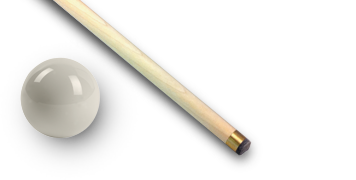

Function of billiard chalk
The reason is friction. It may seem a bit unlikely that something so outwardly minor could actually supply a fundamental force of physics such as this, but the surface roughness made by applying the chalk affects the sliding friction and the “motion-resistance” between the pool cue and the contact area on the cue ball. Ultimately, it prevents the player from a miscue, typically a faulty contact where the tip slides off the ball without the proper spread for the stroke.
Features
As you use your pool stick, the surface of the tip can tend to get smooth and slippery. Just take a look at a pool cue that has been used for a number of games, and you’ll most likely see a certain sheen at the very end. This is a sign that the tip has basically compressed from taking a number of shots. The application of this chalk reduces the smoothness and allows the proper amount of friction, as mentioned before, between the pool cue and the cue ball.
If you’ve ever watched a game of pool, you’ve no doubt seen the competitors chalking the end of their cues after every other shot. That’s pretty much the standard procedure, but they’ll also chalk their sticks prior to those shots that need some added spin. Typically, this has to do with the fact that they’re not hitting the ball at its center and they need a little extra friction, which stands to reason, since they’re using less surface area on both the tip and the ball.
Types
The tips of pool cues come in a variety of grades, and they range from very soft to very hard. The grade of the tip dictates the amount of chalk it can hold and retain–the softer the tip, the better the hold of the chalk. As with anything, there is a trade-off for using a softer tip. It doesn’t last as long as the harder grades.
Expert Insight
To properly chalk your cue, you should apply it somewhat lightly. Most people, namely novice players, will grind the chalk into the tip. This wears it down faster than the normal depreciation of the tip. Once the chalk has a fairly sizable divot in its center, you should toss it out. The deep hollow is a definite indication you need new chalk.
ATTENTION ! According to the official rules the players may use only the color of the chalk that is compatible with the color of the table cloths !